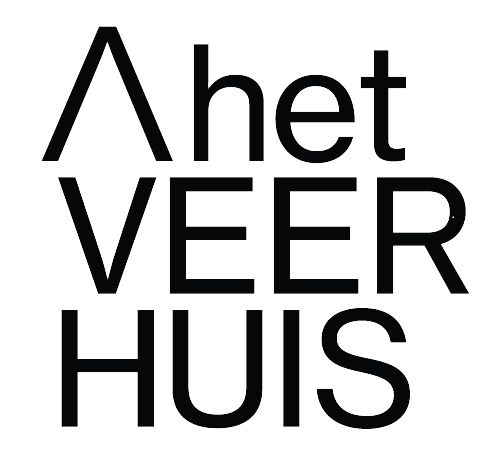Artikel
The Cycle of Yiannis Ritsos’ Mythological Poems

18 januari 2006
‘The Dead House’ was the first piece in this genre to reach completion in 1959, if we exclude Chronicle (1957), which is a poem with definite allusions to antiquity but nevertheless somewhat different from the sequence of poetic monologues that will follow. We should also exclude the numerous shorter poems that were written at the same time when the multi-verse poems were composed, even though in certain ways these shorter poems form the core of multi-verse ones and can be said to condense the experience inherent in them. We must also exclude the poems of the so-called ‘Choric Pieces’ that have been inspired by antiquity. Let us limit ourselves then to the longer poems-cum-monologues. Seen as a whole, these poems, written between 1959 and 1975, are studies and variations on three or four tragic motifs. Needless to say, they are composed in a very distinct way.
During their first phase, these poems only hinted at ancient figures and events through vague allusions. For instance, one might recognise Electra in the face of the lunatic sister speaking in ‘The Dead House’; after all, the poet himself intimates so by resorting to poetic irony, albeit only in the epilogue. “What did she mean? […] And the house – not that of Agamemnon.” Likewise, in ‘Under the Shadow of the Mountain’ (1960), the seventy-year-old unmarried daughter speaking to her two-hundred-year-old nursemaid might just be Electra. In the later phases, the poems not only unfalteringly make unequivocal references to ancient heroes, but even bear their names: ‘Philoctetes’(1963-65), ‘Orestes’ (1962-66), ‘Ajax’ (1967-69), ‘Agamemnon’ (1966-70), ‘Persephone’ (1965-70), ‘Chrysothemis’ (1967-1970), ‘Helen’ (1970 – the only one bearing the definite article in the Greek original, possibly to mean “my Helen”, or perhaps “the real Helen”), ‘Ismene’ (1966-74), ‘The Return of Iphigenia’ (1971-72), ‘Phaedra’ (1974-75).
The importance of space
We should clarify from the outset that when Ritsos chose antiquity it was not out of some Parnassian, classicist or romantic revisiting. Nor is it, at least not solely, a simple juxtaposition, an archaic coating of modern-day problems, though that, too, is sometimes the case. Be that as it may, Ritsos could not have chosen any myth – an oriental myth for example like Brecht did – in order to address issues of our time. Nor could he tap into antiquity like so many other foreign contemporary, mostly French, writers did, such as Gide, Giraudoux, Cocteau, Anouilh, or Sartre, who were after the universality of classic myths in their existential quest for the human soul. For Ritsos, what is of key importance is Greek space, because that is where myth resides. It is this space that preserves historic memory and keeps the cultural heritage safe in its bosom. The houses are an amalgam of ancient palaces and ruins, as if time is the same time that coursed in antiquity, only it is also seen in its historical perspective. These houses fuse with the rundown turn-of-the-century mansions; they are full of old furniture and modern, contemporary objects.
Our houses are built on other, straightlined houses, made of marble,
and these on other houses. Their foundations
are supported on the heads of upright armless statues.
And so, no matter how much lower our huts roost in the fields under the olive trees,
small, grimy with smoke, with only a water pitcher by the door,
you imagine you are living high up, that all about you the air shines,
or at times you imagine you are outside the houses, that you have
no house at all, that you are walking naked,
alone, under a sky startlingly azure or white,
and a statue, now and then, leans his hand lightly on your shoulder.
(‘Perspective’, from Testimonies, translated by Kimon Friar.)
Therefore, statues are not shut “in museums” but intervene in our lives, since they are also the idols of our ancestors, our very ancestors come alive. More than that, they are also our own idols, creations of our hands and imagination. That is why in our turn we fashion our ancestors in our image and lend them our own characteristics. We imbue the myth with our own problems.
Resistance and Retreat
Ritsos’ sense of ancient space correlates to two apparently conflicting states of mind: Firstly, identifying contemporary space with ancient space reinforces the power of resistance. What in ‘Romiosyne’ was “their [the dead] land and our land”, something impregnable, is now enriched with the material presence of history in its entirety. The land becomes inalienable to both inside and outside enemies:
They came. They were looking at the ruins, the surroundings plots of land,
they seemed to measure something with their eyes, they tasted
the air and the light on their tongues. They liked it.
Surely they wanted to take something away from us. We
buttoned up our shirts, although it was hot,
and looked at our shoes. Then one of us
pointed with his finger to something in the distance. The others turned.
As they were turned, he bent discreetly,
took a handful of soil, hid it in his pocket
and moved away indifferently. When the strangers turned about
they saw a deep hole before their feet,
they moved, they looked at their watches and they left.
In the pit: a sword, a vase, a white bone.
(‘Unexpropriated’, Testimonies, translated by Nikos Stangos.)
Thus, we witness a force of resistance, a will to resist. On the contrary, the second tendency has to do with a predisposition to retreat. Historic time has been internalised. Although the myth becomes apropos, it also acquires a timeless force. In other words, the myth is set outside time. History is experienced as continuity and, chiefly, as duration, but definitely not as evolution. To quote Chrysothemis:
Would you like me to put on the lights? It seems to have grown rather dark.
We’ve kept our old-fashioned oil lamps here in the house –
we’re used to them, you see, and attached to them, even though
I rejoice in new things – they allow me to see,
amid all the changes, what we call the immutable element. I
have great fun with improvements in hats, clothes, umbrellas, cars,
cellos, cooking, jails, airships – oh my God,
the fine, the inexorable change that’s no change – and no one makes a decision.
(‘Chrysothemis’, translated by Peter Green and Beverly Bardsley)
The reference to myth presupposes the tragic and the consummate. It becomes a “mimesis of action” I do not think that the parabolic poems that were written during the junta years and drew inspiration from antiquity were entitled Repetitions by accident. Every parable is not just a mask, since it presupposes something that recurs again and again. Behind the mask there is the personage, which is its copy in present time. Nor is it by accident that the poems that were written after 1970 were given the name Becoming, in contrast to some Being latent in mythological poems. I will not insist on that line of thought, however. I merely wanted to point out that our great 20th century poetry, whenever it makes allusions to antiquity, is wholly born out of the dual need for resistance and retreat. It is a defence to what lies outside and it is also an internalisation of problems. When poetry relates to antiquity it does so in a quest for references and identity at times of defeat or uprooting; it does so to counterbalance loss. That applies to everyone from Sikelianos to Kavafis to Seferis to Ritsos (with the exclusion of Varnalis). But that is another major matter.
The Three Levels
These multi-verse poems are therefore underpinned on three levels. There is a mythological-historical background, which is expressed through the archetypal family and the acts of ancient heroes (but not of the gods). This background lends the poems a deeper perspective, extending their dimensions and serving as a stable framework. Furthermore, the temporal distance allows for a more coolheaded approach to things.
The second layer is about the personal memory of an age that has been swathed in a different myth – the age of the poet’s childhood. It is about his family, which was sealed by the same fate, too. It is about the family’s mansion in Monemvassia, the abandoned “dead house” that is identified with the golden palaces in the apex of their glory and later decadence. There, in the childhood years, we come across the fundamental, psychological substratum of the poems, the root of individual relationships, even the origins of the Freudian complexes which so captivatingly come to life through these poems, creating an idealised mother-figure in the face of Clytemnestra, a formidable, dominant father, and so on and so forth. The space where all this takes place is more often than not a closed-up house, the poet’s ancestral house in Monemvassia, the childhood vacations in Lakonia, as we have come to know them through ‘Trial’, ‘Romiosyne’, ‘The Lady of the Vineyards’. This space is peopled by wet-nurses, servants, gardeners, and coach-drivers of times bygone.
At the third layer, we see the reflection of contemporary social problems. Through allusions to the ten-year Trojan war, the chain of revenges sought by the Atreides family, and the sibling clash between Oedipus’ two children, recent social conflicts in Greece, chiefly in the 1940s and 1950s, as well as contemporary Greece in its entirety come to the surface. Mirrored in the poems, we will also find problems of the left wing movement, as well as issues around existent – or non-existent as some say – socialism. Because, as much as Ritsos’ poetry is committed to social change, it is even more fervently committed to ensuring that such change is meaningful. That is why it is mistrustful, even provokingly pessimistic, dare I say. Above all, it is profoundly critical. Says Neoptolemus to Philoctetes:
Come. We need you not only for the victory but, above all,
after the victory, when those of us who are left go aboard the ships once more, returning
with Helen, older by ten years,
with a changed accent, with a different look in her eyes,
concealing in long, gold-embroidered veils
her foreignness and her ageing, concealing
amid her veils and our own foreignness the remorse, the despair,
and the great, inescapable terror of her love:
why did we come, why did we fight, why and where are we returning?
(‘Philoctetes’, translated by Peter Green and Beverly Bardsley)
Neoptolemus’ war, however, is not the same as the conquering Trojan war. It is a different, just struggle. Neoptolemus – and the poet along with him – wishes to convince us of the need for such a victory. Nevertheless:
I heard, amid the splashing of oars, the voices, the squabbles
of the commanders, over booty they had not yet taken, over titles
they had not yet decreed. And I saw in their eyes
hatred for all, the savage suffering of the eminent;
and deep inside, like a feeble firefly in the depth of a dark cave,
I saw their loneliness too. Behind their beards
glittered their fate, stripped bare, as behind a forest’s naked branches
a parched plain in the moonlight, sown with white bones.
(‘Philoctetes’, translated by Peter Green and Beverly Bardsley)
It is at this point, where understanding merges with “their own loneliness”, that Ritsos’ poetry enters another kind of composition, and there it assumes a broader view, becoming compassionate, soothing, ontological. We will come across the same thing in ‘The Dead House’, that feeling of widespread innocence that stems from the general guilt and restores some balance; a feeling of sharing the same human fate, whence an existential study of life and death now emerges.
Transgressing the Myth
How is the myth organised around these three different layers? Within the ancient cycle, the Atreides and Lavdakides are somehow unified, not in the sense that their stories mix but that their members, or personages, share common traits. The two anti-heroic figures of Chrysothemis and Ismene, for instance, exemplify the same symbol, the same personage, and share common attitudes. The same rule applies to the two unbending heroines, Antigone and Electra. In similar fashion, we have the parallel figures of Agamemnon, Achilles and Oedipus, Clytemnestra and Jocasta, and so on and so forth. What I am trying to say is that at an ideal level, another myth is created, that of an archetypal family, with the whole gamut of known symbols – the overbearing father, the idealised mother, the mannish sister, the heroic brother, the friend, etc. This myth is grafted onto contemporary families, which fuel the poet’s memories.
Consequently, due to the symbolic weight that the myth carries, it enriches the psychological truth of the real-life persons that the poet carries within, as he also carries the emotional weight of a childhood destined to crumble under disease, disaster and grief. This mythical element co-exists in Ritsos along with poetry, and the celebration of day-to-day living. Within this relationship, personages which are already aggrandised change behaviour and become demystified through the reversal of roles, only, of course, to create yet another myth. Electra and Antigone are often negative figures, obsessed with an unyielding life model and a sense of duty and sacrifice, which, in this particular case, bespeaks of a deeper negation of life. At least this is how others look upon them.
On the contrary, Clytemnestra is a refulgent figure. She is a divine woman, endowed with beauty and glamour. Even her female coquetry expresses an almost visceral, lush relation to life. She has been wounded as a mother and she has been wounded in her dignity. She is tender and motherly with her children, with animals and flowers. Her passion is justified. She is par excellence the most interesting figure in the entire series of these poems. […]
In this light, the transgression – and not just the undermining, on that I am clear – of the myth does not come about because the central personages change but because there is a change in perspective. We see other behaviours, dictated by another impression of and stance on life. The core feelings, the passions, the ambitions do not change. They are there to cover or reveal other values. Moreover, the important events in the action remain the same. It is the motives that change, and so does their interpretation. The tragic and the inescapable are, to a certain degree, experienced as a social fate, that is, as necessity. Orestes may not commit murder after all. Philoctetes may stay on Lemnos forever, where, apparently, he endeavours to retire by his own choice. Yet here, the refusal to commit murder expresses a humane morality, whereas a consent to commit it speaks of a revolutionary need, “so that this land may breathe”, to quote Orestes. His final choice, although socially predetermined, lies with his personal responsibility. Orestes takes full responsibility for his fate. So does Philoctetes. He is not convinced by some deus ex machina but by young Neoptolemus, the next generation caught in this endless war, and by the song of the warrior sailors; in other words, by popular demand. Of course, his weapons are not of the conquering type. They are the weapons of a just victory, since “their glinting sharpened spears are drawn against death”. In the context of this historic perspective, Philoctetes chooses to enlist again, in spite of his reservations.
The muted person
Near the hero-narrator there is always a listener. She does not speak at all (only in the epilogue, occasionally) and is barely seen to react during the course of the narration. Above all else, we witness her inability, or refusal, to identify herself with the hero. She is usually more innocent, more gullible – and much ‘healthier’. She expresses a world that stands in awe and at the same time critically before a strange apocalypse. Her presence is like a stimulus so that language may have something to hone in on, so that the confession mood is focused somewhere, and its truth made relative. When your name is Ismene, you would address an audience in general differently than the way you would choose to speak to a young officer of the guard, who is the son of your old gardener. Oftentimes, in these relationships there lurks a latent eroticism which charges the poem, creating odd associations and reactions. This eroticism, in the form of repressed desire or an unattained dream observed at the end of one’s life, lends another vibration to the invariably insinuative language.
A prologue introduces the poems. It describes the space, the particular lighting effects, the personages. The epilogue offers the denouement, and another perspective: the perspective of the mute, neutral listener. That, too, is an alibi which allows the poem to exist without having to speak the final word. It encapsulates the poem in a certain frame. It is a sudden change of direction; like getting out of closed rooms, ruined houses, the space where drama dwells.
From Theatre Review 2, January 1980
Myth in Ritsos’ poetry works on three main levels, argues Chrysa Prokopaki, reflecting the historical background, personal memory and contemporary social problems. “Due to the symbolic weight that the myth carries, it enriches the psychological truth of the real-life persons that the poet carries within, as he also carries the emotional weight of a childhood destined to crumble under disease, disaster and grief.”
Yiannis Ritsos’ ‘The Dead House’ and ‘Under the Shadow of the Mountain’, collected in The Fourth Dimension volume, are two of his multi-verse poetic compositions that were written in the form of a poetic monologue. More precisely, these two pieces belong to the cycle of mythological poems, to use the precise term for brevity. It is clear that, to a certain degree, these poems draw inspiration from ancient mythology, Homer and the Greek tragic playwrights. Be that as it may, their particular articulation and function are much more complex. ‘The Dead House’ was the first piece in this genre to reach completion in 1959, if we exclude Chronicle (1957), which is a poem with definite allusions to antiquity but nevertheless somewhat different from the sequence of poetic monologues that will follow. We should also exclude the numerous shorter poems that were written at the same time when the multi-verse poems were composed, even though in certain ways these shorter poems form the core of multi-verse ones and can be said to condense the experience inherent in them. We must also exclude the poems of the so-called ‘Choric Pieces’ that have been inspired by antiquity. Let us limit ourselves then to the longer poems-cum-monologues. Seen as a whole, these poems, written between 1959 and 1975, are studies and variations on three or four tragic motifs. Needless to say, they are composed in a very distinct way.
During their first phase, these poems only hinted at ancient figures and events through vague allusions. For instance, one might recognise Electra in the face of the lunatic sister speaking in ‘The Dead House’; after all, the poet himself intimates so by resorting to poetic irony, albeit only in the epilogue. “What did she mean? […] And the house – not that of Agamemnon.” Likewise, in ‘Under the Shadow of the Mountain’ (1960), the seventy-year-old unmarried daughter speaking to her two-hundred-year-old nursemaid might just be Electra. In the later phases, the poems not only unfalteringly make unequivocal references to ancient heroes, but even bear their names: ‘Philoctetes’(1963-65), ‘Orestes’ (1962-66), ‘Ajax’ (1967-69), ‘Agamemnon’ (1966-70), ‘Persephone’ (1965-70), ‘Chrysothemis’ (1967-1970), ‘Helen’ (1970 – the only one bearing the definite article in the Greek original, possibly to mean “my Helen”, or perhaps “the real Helen”), ‘Ismene’ (1966-74), ‘The Return of Iphigenia’ (1971-72), ‘Phaedra’ (1974-75).
The importance of space
We should clarify from the outset that when Ritsos chose antiquity it was not out of some Parnassian, classicist or romantic revisiting. Nor is it, at least not solely, a simple juxtaposition, an archaic coating of modern-day problems, though that, too, is sometimes the case. Be that as it may, Ritsos could not have chosen any myth – an oriental myth for example like Brecht did – in order to address issues of our time. Nor could he tap into antiquity like so many other foreign contemporary, mostly French, writers did, such as Gide, Giraudoux, Cocteau, Anouilh, or Sartre, who were after the universality of classic myths in their existential quest for the human soul. For Ritsos, what is of key importance is Greek space, because that is where myth resides. It is this space that preserves historic memory and keeps the cultural heritage safe in its bosom. The houses are an amalgam of ancient palaces and ruins, as if time is the same time that coursed in antiquity, only it is also seen in its historical perspective. These houses fuse with the rundown turn-of-the-century mansions; they are full of old furniture and modern, contemporary objects.
Our houses are built on other, straightlined houses, made of marble,
and these on other houses. Their foundations
are supported on the heads of upright armless statues.
And so, no matter how much lower our huts roost in the fields under the olive trees,
small, grimy with smoke, with only a water pitcher by the door,
you imagine you are living high up, that all about you the air shines,
or at times you imagine you are outside the houses, that you have
no house at all, that you are walking naked,
alone, under a sky startlingly azure or white,
and a statue, now and then, leans his hand lightly on your shoulder.
(‘Perspective’, from Testimonies, translated by Kimon Friar.)
Therefore, statues are not shut “in museums” but intervene in our lives, since they are also the idols of our ancestors, our very ancestors come alive. More than that, they are also our own idols, creations of our hands and imagination. That is why in our turn we fashion our ancestors in our image and lend them our own characteristics. We imbue the myth with our own problems.
Resistance and Retreat
Ritsos’ sense of ancient space correlates to two apparently conflicting states of mind: Firstly, identifying contemporary space with ancient space reinforces the power of resistance. What in ‘Romiosyne’ was “their [the dead] land and our land”, something impregnable, is now enriched with the material presence of history in its entirety. The land becomes inalienable to both inside and outside enemies:
They came. They were looking at the ruins, the surroundings plots of land,
they seemed to measure something with their eyes, they tasted
the air and the light on their tongues. They liked it.
Surely they wanted to take something away from us. We
buttoned up our shirts, although it was hot,
and looked at our shoes. Then one of us
pointed with his finger to something in the distance. The others turned.
As they were turned, he bent discreetly,
took a handful of soil, hid it in his pocket
and moved away indifferently. When the strangers turned about
they saw a deep hole before their feet,
they moved, they looked at their watches and they left.
In the pit: a sword, a vase, a white bone.
(‘Unexpropriated’, Testimonies, translated by Nikos Stangos.)
Thus, we witness a force of resistance, a will to resist. On the contrary, the second tendency has to do with a predisposition to retreat. Historic time has been internalised. Although the myth becomes apropos, it also acquires a timeless force. In other words, the myth is set outside time. History is experienced as continuity and, chiefly, as duration, but definitely not as evolution. To quote Chrysothemis:
Would you like me to put on the lights? It seems to have grown rather dark.
We’ve kept our old-fashioned oil lamps here in the house –
we’re used to them, you see, and attached to them, even though
I rejoice in new things – they allow me to see,
amid all the changes, what we call the immutable element. I
have great fun with improvements in hats, clothes, umbrellas, cars,
cellos, cooking, jails, airships – oh my God,
the fine, the inexorable change that’s no change – and no one makes a decision.
(‘Chrysothemis’, translated by Peter Green and Beverly Bardsley)
The reference to myth presupposes the tragic and the consummate. It becomes a “mimesis of action” I do not think that the parabolic poems that were written during the junta years and drew inspiration from antiquity were entitled Repetitions by accident. Every parable is not just a mask, since it presupposes something that recurs again and again. Behind the mask there is the personage, which is its copy in present time. Nor is it by accident that the poems that were written after 1970 were given the name Becoming, in contrast to some Being latent in mythological poems. I will not insist on that line of thought, however. I merely wanted to point out that our great 20th century poetry, whenever it makes allusions to antiquity, is wholly born out of the dual need for resistance and retreat. It is a defence to what lies outside and it is also an internalisation of problems. When poetry relates to antiquity it does so in a quest for references and identity at times of defeat or uprooting; it does so to counterbalance loss. That applies to everyone from Sikelianos to Kavafis to Seferis to Ritsos (with the exclusion of Varnalis). But that is another major matter.
The Three Levels
These multi-verse poems are therefore underpinned on three levels. There is a mythological-historical background, which is expressed through the archetypal family and the acts of ancient heroes (but not of the gods). This background lends the poems a deeper perspective, extending their dimensions and serving as a stable framework. Furthermore, the temporal distance allows for a more coolheaded approach to things.
The second layer is about the personal memory of an age that has been swathed in a different myth – the age of the poet’s childhood. It is about his family, which was sealed by the same fate, too. It is about the family’s mansion in Monemvassia, the abandoned “dead house” that is identified with the golden palaces in the apex of their glory and later decadence. There, in the childhood years, we come across the fundamental, psychological substratum of the poems, the root of individual relationships, even the origins of the Freudian complexes which so captivatingly come to life through these poems, creating an idealised mother-figure in the face of Clytemnestra, a formidable, dominant father, and so on and so forth. The space where all this takes place is more often than not a closed-up house, the poet’s ancestral house in Monemvassia, the childhood vacations in Lakonia, as we have come to know them through ‘Trial’, ‘Romiosyne’, ‘The Lady of the Vineyards’. This space is peopled by wet-nurses, servants, gardeners, and coach-drivers of times bygone.
At the third layer, we see the reflection of contemporary social problems. Through allusions to the ten-year Trojan war, the chain of revenges sought by the Atreides family, and the sibling clash between Oedipus’ two children, recent social conflicts in Greece, chiefly in the 1940s and 1950s, as well as contemporary Greece in its entirety come to the surface. Mirrored in the poems, we will also find problems of the left wing movement, as well as issues around existent – or non-existent as some say – socialism. Because, as much as Ritsos’ poetry is committed to social change, it is even more fervently committed to ensuring that such change is meaningful. That is why it is mistrustful, even provokingly pessimistic, dare I say. Above all, it is profoundly critical. Says Neoptolemus to Philoctetes:
Come. We need you not only for the victory but, above all,
after the victory, when those of us who are left go aboard the ships once more, returning
with Helen, older by ten years,
with a changed accent, with a different look in her eyes,
concealing in long, gold-embroidered veils
her foreignness and her ageing, concealing
amid her veils and our own foreignness the remorse, the despair,
and the great, inescapable terror of her love:
why did we come, why did we fight, why and where are we returning?
(‘Philoctetes’, translated by Peter Green and Beverly Bardsley)
Neoptolemus’ war, however, is not the same as the conquering Trojan war. It is a different, just struggle. Neoptolemus – and the poet along with him – wishes to convince us of the need for such a victory. Nevertheless:
I heard, amid the splashing of oars, the voices, the squabbles
of the commanders, over booty they had not yet taken, over titles
they had not yet decreed. And I saw in their eyes
hatred for all, the savage suffering of the eminent;
and deep inside, like a feeble firefly in the depth of a dark cave,
I saw their loneliness too. Behind their beards
glittered their fate, stripped bare, as behind a forest’s naked branches
a parched plain in the moonlight, sown with white bones.
(‘Philoctetes’, translated by Peter Green and Beverly Bardsley)
It is at this point, where understanding merges with “their own loneliness”, that Ritsos’ poetry enters another kind of composition, and there it assumes a broader view, becoming compassionate, soothing, ontological. We will come across the same thing in ‘The Dead House’, that feeling of widespread innocence that stems from the general guilt and restores some balance; a feeling of sharing the same human fate, whence an existential study of life and death now emerges.
Transgressing the Myth
How is the myth organised around these three different layers? Within the ancient cycle, the Atreides and Lavdakides are somehow unified, not in the sense that their stories mix but that their members, or personages, share common traits. The two anti-heroic figures of Chrysothemis and Ismene, for instance, exemplify the same symbol, the same personage, and share common attitudes. The same rule applies to the two unbending heroines, Antigone and Electra. In similar fashion, we have the parallel figures of Agamemnon, Achilles and Oedipus, Clytemnestra and Jocasta, and so on and so forth. What I am trying to say is that at an ideal level, another myth is created, that of an archetypal family, with the whole gamut of known symbols – the overbearing father, the idealised mother, the mannish sister, the heroic brother, the friend, etc. This myth is grafted onto contemporary families, which fuel the poet’s memories.
Consequently, due to the symbolic weight that the myth carries, it enriches the psychological truth of the real-life persons that the poet carries within, as he also carries the emotional weight of a childhood destined to crumble under disease, disaster and grief. This mythical element co-exists in Ritsos along with poetry, and the celebration of day-to-day living. Within this relationship, personages which are already aggrandised change behaviour and become demystified through the reversal of roles, only, of course, to create yet another myth. Electra and Antigone are often negative figures, obsessed with an unyielding life model and a sense of duty and sacrifice, which, in this particular case, bespeaks of a deeper negation of life. At least this is how others look upon them.
On the contrary, Clytemnestra is a refulgent figure. She is a divine woman, endowed with beauty and glamour. Even her female coquetry expresses an almost visceral, lush relation to life. She has been wounded as a mother and she has been wounded in her dignity. She is tender and motherly with her children, with animals and flowers. Her passion is justified. She is par excellence the most interesting figure in the entire series of these poems. […]
In this light, the transgression – and not just the undermining, on that I am clear – of the myth does not come about because the central personages change but because there is a change in perspective. We see other behaviours, dictated by another impression of and stance on life. The core feelings, the passions, the ambitions do not change. They are there to cover or reveal other values. Moreover, the important events in the action remain the same. It is the motives that change, and so does their interpretation. The tragic and the inescapable are, to a certain degree, experienced as a social fate, that is, as necessity. Orestes may not commit murder after all. Philoctetes may stay on Lemnos forever, where, apparently, he endeavours to retire by his own choice. Yet here, the refusal to commit murder expresses a humane morality, whereas a consent to commit it speaks of a revolutionary need, “so that this land may breathe”, to quote Orestes. His final choice, although socially predetermined, lies with his personal responsibility. Orestes takes full responsibility for his fate. So does Philoctetes. He is not convinced by some deus ex machina but by young Neoptolemus, the next generation caught in this endless war, and by the song of the warrior sailors; in other words, by popular demand. Of course, his weapons are not of the conquering type. They are the weapons of a just victory, since “their glinting sharpened spears are drawn against death”. In the context of this historic perspective, Philoctetes chooses to enlist again, in spite of his reservations.
The muted person
Near the hero-narrator there is always a listener. She does not speak at all (only in the epilogue, occasionally) and is barely seen to react during the course of the narration. Above all else, we witness her inability, or refusal, to identify herself with the hero. She is usually more innocent, more gullible – and much ‘healthier’. She expresses a world that stands in awe and at the same time critically before a strange apocalypse. Her presence is like a stimulus so that language may have something to hone in on, so that the confession mood is focused somewhere, and its truth made relative. When your name is Ismene, you would address an audience in general differently than the way you would choose to speak to a young officer of the guard, who is the son of your old gardener. Oftentimes, in these relationships there lurks a latent eroticism which charges the poem, creating odd associations and reactions. This eroticism, in the form of repressed desire or an unattained dream observed at the end of one’s life, lends another vibration to the invariably insinuative language.
A prologue introduces the poems. It describes the space, the particular lighting effects, the personages. The epilogue offers the denouement, and another perspective: the perspective of the mute, neutral listener. That, too, is an alibi which allows the poem to exist without having to speak the final word. It encapsulates the poem in a certain frame. It is a sudden change of direction; like getting out of closed rooms, ruined houses, the space where drama dwells.
From Theatre Review 2, January 1980
© Chrysa Prokopaki
Sponsors














Partners
LantarenVenster – Verhalenhuis Belvédère

